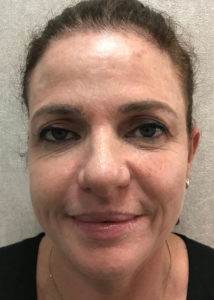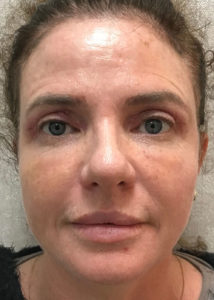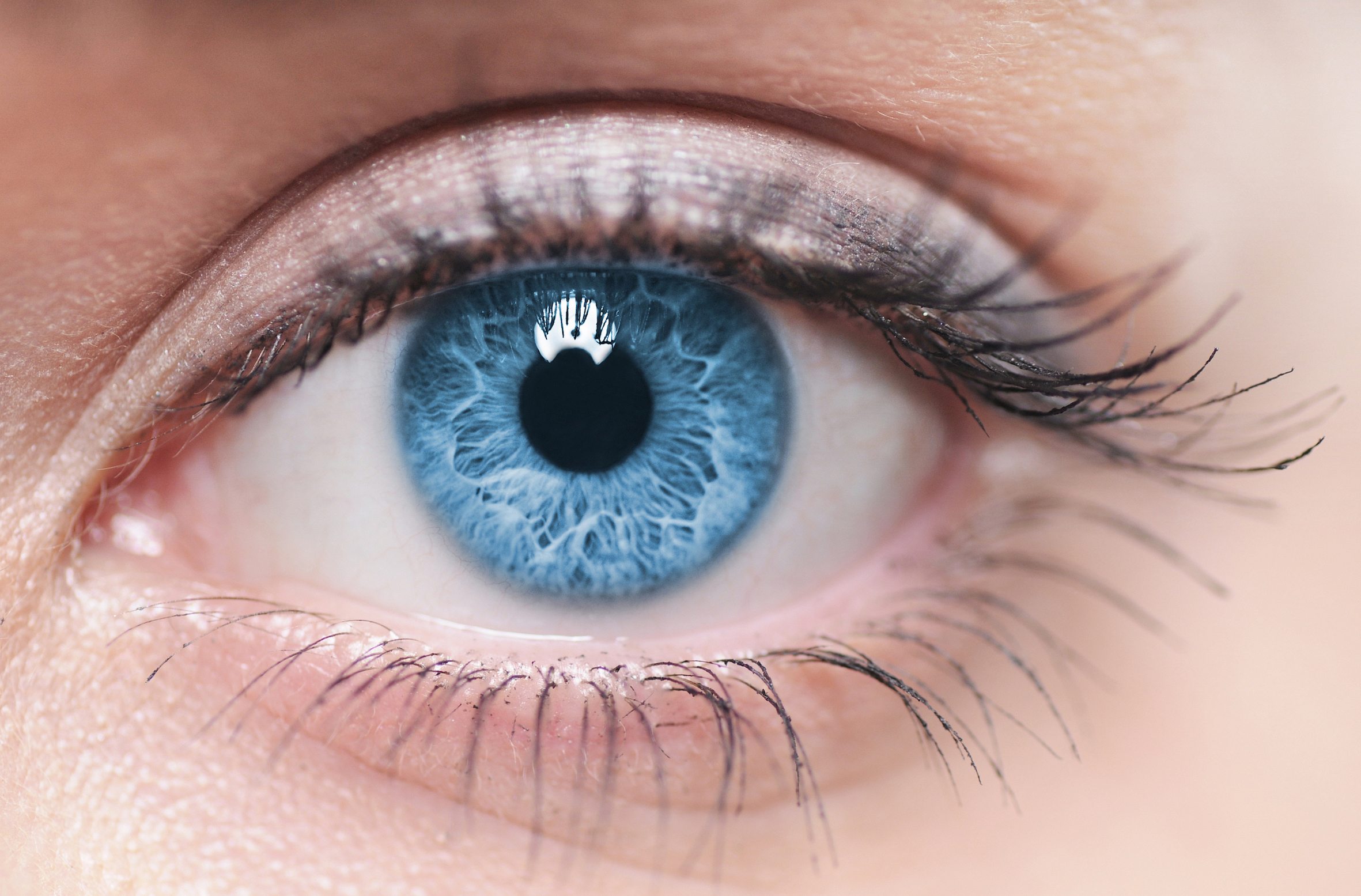There is no doubt that the lockdown has presented many challenges and imposed difficulties on all of us – impacting our lives in various and unexpected ways. From Level 4 onwards, I was fortunately allowed to see patients again, but the procedures remained limited. The most common procedure during this time has been ‘in rooms’ eyelid surgery – blepharoplasty (upper blepharoplasty), with patients varying in age, from 40-something to 70, and for reasons ranging from purely aesthetically to functional.
What is a Blepharoplasty (eyelid surgery)?
Blepharoplasty is the surgical procedure for correcting defects, deformities and disfigurations of the eyelids. With the excision and the removal, or the repositioning (or both) of excess tissues, such as skin and orbital fat, and the reinforcement of the corresponding muscle and tendon tissues, the blepharoplasty procedure resolves functional and cosmetic problems of the periorbital region which is the area from the eyebrow to the upper portion of the cheek.[1]
This procedure can be truly rewarding as it requires minimal downtime and when performed by a specialist it offers great results, without visible evidence of surgery.
Blepharoplasty is definitely one of the most popular procedures, but despite its popularity, it remains a surgical procedure and strict care and pre- and post-operative instructions need to be adhered to.
As I always say, a surgeon can only be as good as his patients who are strictly following the protocol to ensure optimal results post procedures. That being said, I consider myself very fortunate in having the most diligent patients who are committed to their procedures, protocols and treatment – resulting in fantastic outcomes.
Why Blepharoplasty?
A blepharoplasty is designed to enhance the appearance of the eyelids in both men and women. It can be performed on the upper eyelids, lower eyelids or both.[2]
In addition, blepharoplasty allows an individual to treat the following:
- Bags that form under the eyes
- Drooping lower eyelids
- Fine wrinkles and excess skin around the lower eyelids
- Excess fat deposits in the eyelids
- Loose or sagging skin that can impair an individual’s vision
What are the different types of eyelid surgery?
Several types of eyelid surgery are available, including:
- Upper blepharoplasty:Involves the removal of excess skin, muscle and fat where necessary.
- Lower blepharoplasty:Ensures an individual can eliminate puffiness of the lower eyelids that occurs due to bulging of orbital fat of the lower eyelid. This can be performed either through the outside skin (transcutaneous) or via the inside of the eyelid with no visible skin scars (transconjunctival lower blepharoplasty). This is my preferred method of treating lower lid laxity and bulge, as there is no skin incision and excess fat is either subtly removed or repositioned as required. This also removes the deep tear trough deformity by repositioning the fat.
- Revision Blepharoplasty:Corrects the results of previous eyelid surgery and can deliver both cosmetic and functional benefits. Frequently as part of periorbital rejuvenation, fat transfer is utilised.
- Not all eyelid procedures need to be surgical. A non-surgical eyelid lift is also available. It addresses volume loss in and around the eyes that otherwise may cause a person to appear older than his or her actual age. During a non-surgical eyelid lift, injectables are used to minimize hollowness of the lower eyes and laxity of the upper eyelids.

Before Upper Blepharoplasty

3 weeks after Upper Blepharoplasty
The procedure
Blepharoplasties are performed on an outpatient basis. That means you can go home shortly after the procedure. I use general anaesthesia for some patients with high anxiety and definitely always when performing lower blepharoplasties.
With an upper blepharoplasty, I will usually inject a numbing agent into the eyelids. I will the make a small cut and remove excess skin, as well as muscle and sometimes fat (if it is needed). Some of these tissues might be moved to other areas surrounding the eye before the incision is closed. I also administer electro surgery to minimize or prevent bleeding.
The lower lid blepharoplasty usually involves removal of fat, which contributes to the under-eye bags, as well as sometimes removing a small amount of skin. The incision may either be on the inside of the eyelid or on the outside underneath the lower eyelashes. In some people, the lower eyelid may need to be tightened or secured to the bony skeleton. This is referred to as a canthopexy or canthoplasty.
Recovering from eyelid surgery
Recovery from blepharoplasty is relatively short compared with other types of surgeries. With general anaesthesia you’ll be moved to a recovery room immediately after surgery. You’ll be monitored for side effects and, unless there are any complications, you’ll go home the same day. With an ‘in room’ procedure you can go home straight after surgery, provided you are picked up by a friend or family, as you are not allowed to drive.
It’s important to rest for a few days immediately following eyelid surgery. You might experience some swelling and pain. I prescribe some anti-inflammatories and painkillers to aid the healing process and provide comfort. Prior to your operation you will have received my post-operative instructions. It is important that you follow these.
For example:
- For the first two days after surgery you must rest and do no physical activity at all. Do not bend over.
- Rest with your head at a min. 30 degrees angle.
- You have to alternate ice packs and hot packs to stimulate drainage and reduce swelling.
- You cannot overly wash your face or eyes.
I have noticed that those patients who strictly adhere to the procedural instructions, have less swelling or bruising and heal more rapidly. However, be aware that the eye area bruises easily in general, so recovery largely depends on how you take care of yourself after the surgery. thank
Blurry vision and sensitivity to light are also possible short-term side effects. If this persists for longer than two days, you would need to see your physician for an examination.
You are not permitted to wear contact lenses for two weeks following eyelid surgery. Be sure to have an alternative, such as prescription glasses, on hand.
You don’t need to keep your eyes covered throughout the entire recovery phase. You’ll also need to make sure you gently wash the area and keep it clean. After a few days, you’ll see the surgeon again for an evaluation. Your stitches will be removed within 7-10 days post the surgery dependent on the surgical procedure.
The risks of eyelid surgery
All types of surgery carry the risk of bleeding, bruising, and infection. Blood clots are also a rare, but serious risk.
Other risks and complications include:
- blurry vision
- damage from excessive sun exposure
- dry eyes
- itchiness around the eye area
- inability to close your eyes
- muscle damage
- scars
I will inform you about all the possible risks involved with Blepharoplasty, so that you can make an informed decision. I also urge my patients to inform me about any previous complications with any type of past surgeries so as to better prepare for outcomes.
Efficacy of Blepharoplasty
Sometimes a blepharoplasty is used in conjunction with another related procedure to improve the results. Some people with significant saggy eyebrows might opt for a brow lift. Others may even undergo a full facelift to address other cosmetic concerns at the same time. I always advise my patients on available options, solutions and possible/or alternative treatments so as to ensure that the patient is informed and cognisant of potential outcomes.
Do I need a Blepharoplasty?
Blepharoplasty is primarily used to treat common signs of ageing that develop around your eyes. If you’re concerned about excessive amounts of skin or sagginess around your eyes, come and talk to me. I will examine you and we will determine if you are the right candidate for a blepharoplasty procedure.
I look forward to welcoming you at my practice.
Kind regards,
[1] Information derived from www.wikipedia.com
[2] Information derived from www.drseanmoodley.co.za

